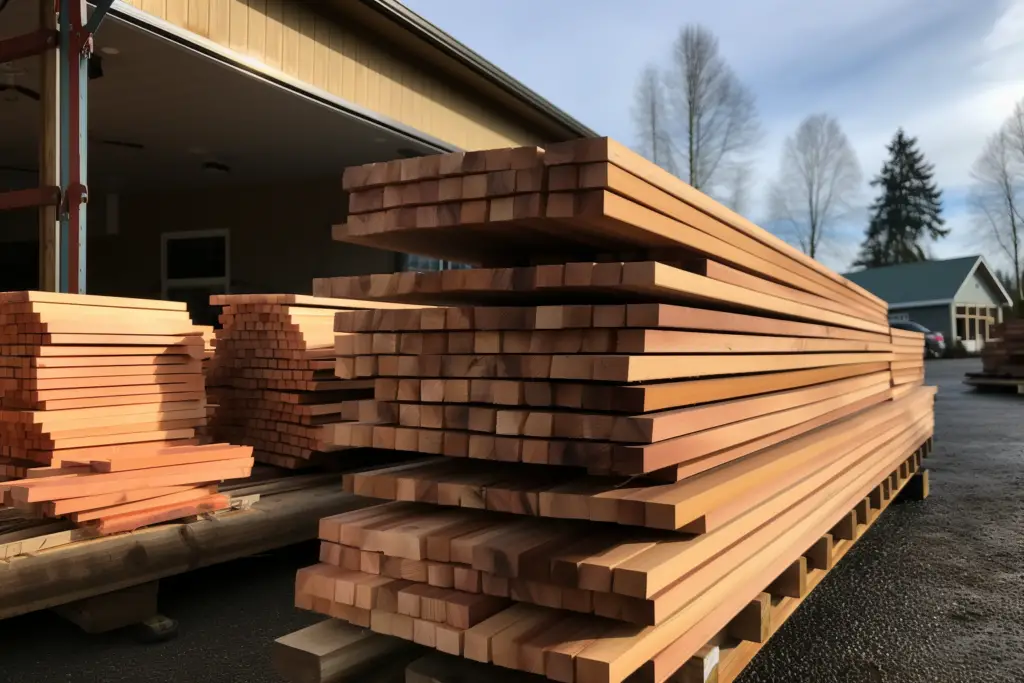Alright, you’ve got your eyes on a lush outdoor space. You’re ready to pick out the perfect wood to make your dream a reality. But then the skies open up and reality pours down—what wood is up to this watery challenge?
The best kinds of lumber for rainy weather are Western Red Cedar and Teak Wood. These woods offer high water resistance and durability, making them ideal for wet climates. Western Red Cedar is a softwood native to North America and is an excellent choice for outdoor applications due to its natural oils and decay resistance. Teak Wood, originating from Southeast Asia, is another durable wood rich in natural oils, often used for boat building and outdoor furniture. Both woods provide good resistance to water damage and are well-suited for outdoor use in rainy weather.
But these aren’t your run-of-the-mill timbers; these are the A-list celebrities of the wood world, loved by homeowners and professionals alike.
But that’s also not the whole story. If you’re like me, then you probably still have questions. Questions like:
- Is cedar wood good for rain?
- What wood doesn’t rot in wet climates?
- How can you make your existing wood furniture waterproof?
- Are you curious if plywood can hold up during the rainy season?
We’ve got the answers to these and many more. So, property flippers, real estate pros, and DIY diehards, get ready to drill deep into the grain of this lumber lowdown.
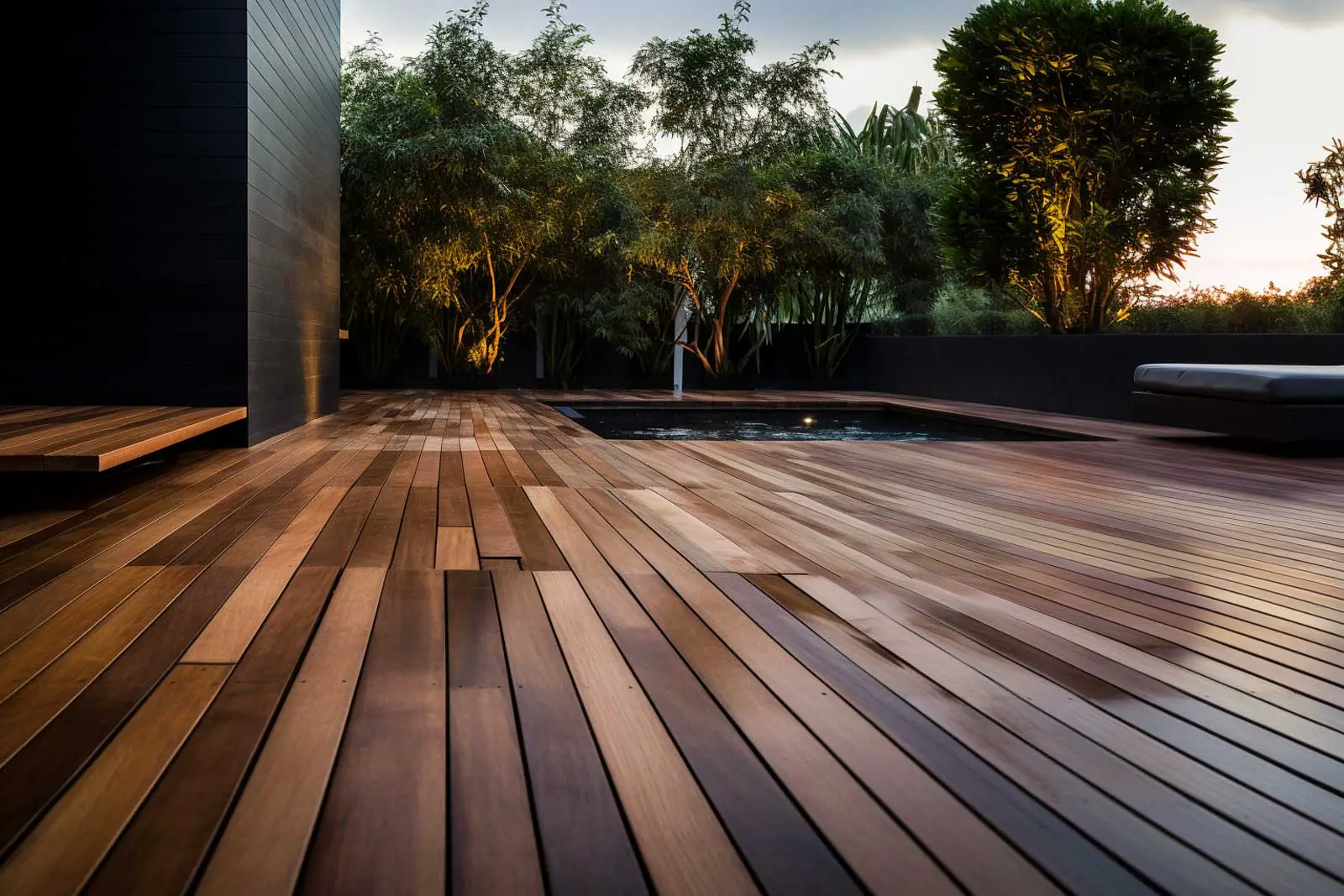
The Lumber Lowdown: No More Guesswork on Wood for Wet Weather
So, you’re thinking about embarking on an outdoor project, but you’re eyeing those ominous clouds on the horizon, right? I get it: You’re tempted to hit the lumber yard, but you’re paralyzed by indecision—what kind of lumber will withstand your local climate, especially those wet, rainy days? Don’t worry; in this section, we’re going to delve deep into the types of wood that thrive in high moisture content environments. No more hit and miss; let’s nail this one!
Unmasking the Cedar: Why Western Red Cedar Tops the List
Look, wood rot is real, and it can derail your dream of a new house or an awesome outdoor furniture set. But what if I told you there’s a type of wood that practically laughs in the face of water damage? Enter Western Red Cedar, a wood species native to North America.
- Water Resistance: High
- Great For: Outdoor applications, exterior siding, and patio furniture
Native to North America, this soft wood is chock-full of natural oils that make it resistant to decay and insect damage. Remember the time I built a treehouse for my nephew? I chose Western Red Cedar. Ten wet seasons later, the treehouse still stands strong, and I’ve claimed the title of “Coolest Uncle Ever.”
White Oak: The Marvel That Beat Red Oak in a Mud-Wrestling Match
White oak has a secret weapon: its excellent water resistance. Originating from the United States, this dense wood is not only stylish but also an excellent choice for outdoor use in wet climates.
- Water Resistance: Excellent
- Great For: Outdoor furniture, boat building
If you’ve got a little more cash to splash and you’re considering something like boat building, white oak could be your go-to. Plus, it’s way better than its cousin, red oak, which wouldn’t even make it through a kiddie pool party.
Breaking the Myths: Black Locust (Robinia pseudoacacia)
Often overshadowed by more popular choices, Black Locust (scientifically known as Robinia pseudoacacia) is like the underrated indie band of lumber—it’s high-quality, even if it’s not the most famous.
- Water Resistance: High
- Great For: Building materials, exterior siding
Originating from the United States, Black Locust is one of the hardest woods around, boasting long life and high resistance to water damage. It’s the dark horse in this lumber saga, yet it could be the star of your next outdoor project.
Teak: The Luxury Liner of Lumber
Originating from Southeast Asia, teak wood is like the Rolls Royce of wood. If there were an Oscar for wood species that defy the elements, Teak would win it.
- Water Resistance: High
- Great For: High-end outdoor furniture, patio furniture
Teak’s natural oils make it incredibly water resistant. Yes, it’s expensive, but if you’re after longevity and willing to perform regular maintenance, this wood is worth its weight in gold.
Ipe: The Hercules of Woods
Brazilian Walnut, commonly known as Ipe wood, is for those who like their furniture like their steaks: tough. It’s one of the hardest woods available, originating from South America.
- Water Resistance: Very high
- Great For: Dense wood projects, outdoor furniture
This durable wood species has a long life, and it’s high on the water resistance chart. Ipe is often used in harsh environments, like boardwalks, that require a wood capable of withstanding high winds and wet-dry cycles.
Quick Fire: The Other MVPs in Wet Weather
- Cypress: Naturally decay resistant, a hit for exterior siding (Origin: North America).
- Redwood: High moisture resistance and natural beauty, ideal for furniture covers (Origin: California Redwood).
- Treated Pine: Soft but chemically treated for added resistance; a budget-friendly option.
- Mahogany: Specifically Honduran Mahogany, great for wet rainy days and high humidity (Origin: Central America).
- Douglas Fir (Treated): Tough but needs chemical treatments for optimal water resistance (Origin: North America).
Okay, you’re now armed with a complete rundown of the best woods for tackling adverse weather. No more excuses. It’s time to shift your focus to the next challenge: selecting the best exterior wood stains.
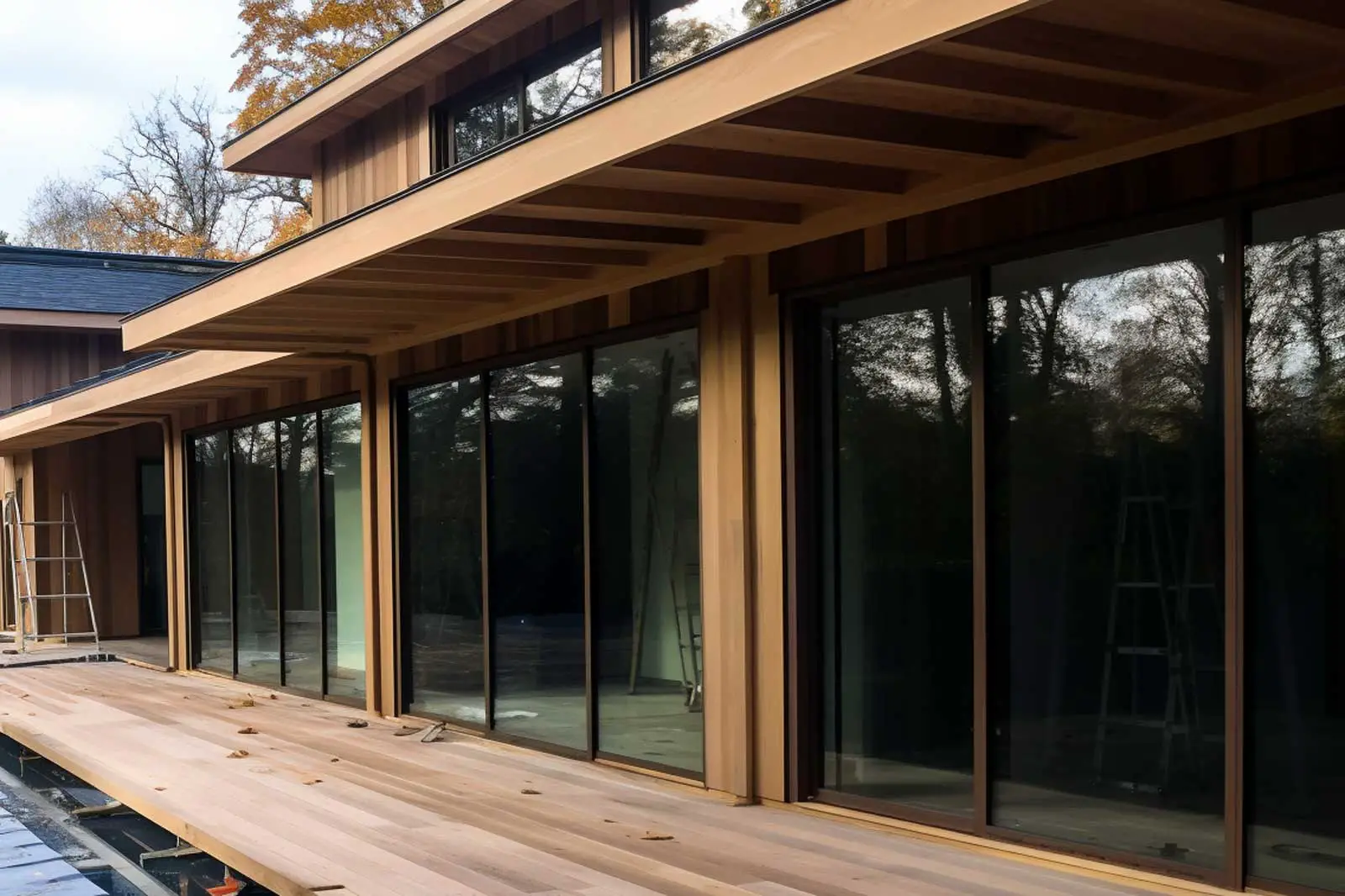
The Damp Truth—Understanding Water Damage in Lumber
So, you’ve found the perfect wood for that Pinterest-worthy patio furniture. But hold on a minute—have you factored in Mother Nature’s soggy curveballs? Let’s dive into how rainy weather and high humidity can really do a number on various types of wood.
The Water Weight: How Moisture Content Skews the Game
Here’s the deal: not all wood species are created equal when it comes to water damage. Moisture content is the wood’s Achilles’ heel. Picture this. You’ve just spent an entire weekend building the ideal outdoor space with all the trappings, only to watch it warp and twist at the first sign of rain. Nightmare, right? But don’t worry; you can avert this doomsday scenario.
Table: Moisture Content Across Popular Wood Species
| Wood Species | Average Moisture Content |
|---|---|
| Western Red Cedar | 30% |
| White Oak | 28% |
| Black Locust | 35% |
How to Keep it Dry
A moisture meter can be your best friend here. These nifty gadgets will tell you the moisture content in your wood. And let’s face it, no one wants to play Russian roulette with their wood selection. (Especially when you’ve convinced yourself you’re the next DIY superstar.)
Steamy Realities: High Humidity and Wood Woes
We’ve talked water damage, but what about the silent killer: high humidity? This bad boy can have the same gnarly effect on wood as direct rain exposure, slowly deteriorating the wood fibers. Remember that time you left a paperback book out in a steamy bathroom? Yeah, imagine that but with your brand new cedar patio furniture. It’s not pretty.
Weather Forecast: High Chance of Wood Rot
If you live in a region known for its sticky air (hello, Florida), you’ll need to choose wood species that have good resistance to moisture absorption. Think western red cedar or black locust. These species have naturally occurring oils that act like a built-in raincoat. (Bet you didn’t know wood could be so tech-savvy.)
By the way, a little personal story here. I once built a beautiful Adirondack chair from untreated pine. It was a masterpiece, or so I thought. Two weeks into the rainy season, that thing looked like a prop from a post-apocalyptic movie. Don’t make the same mistake.
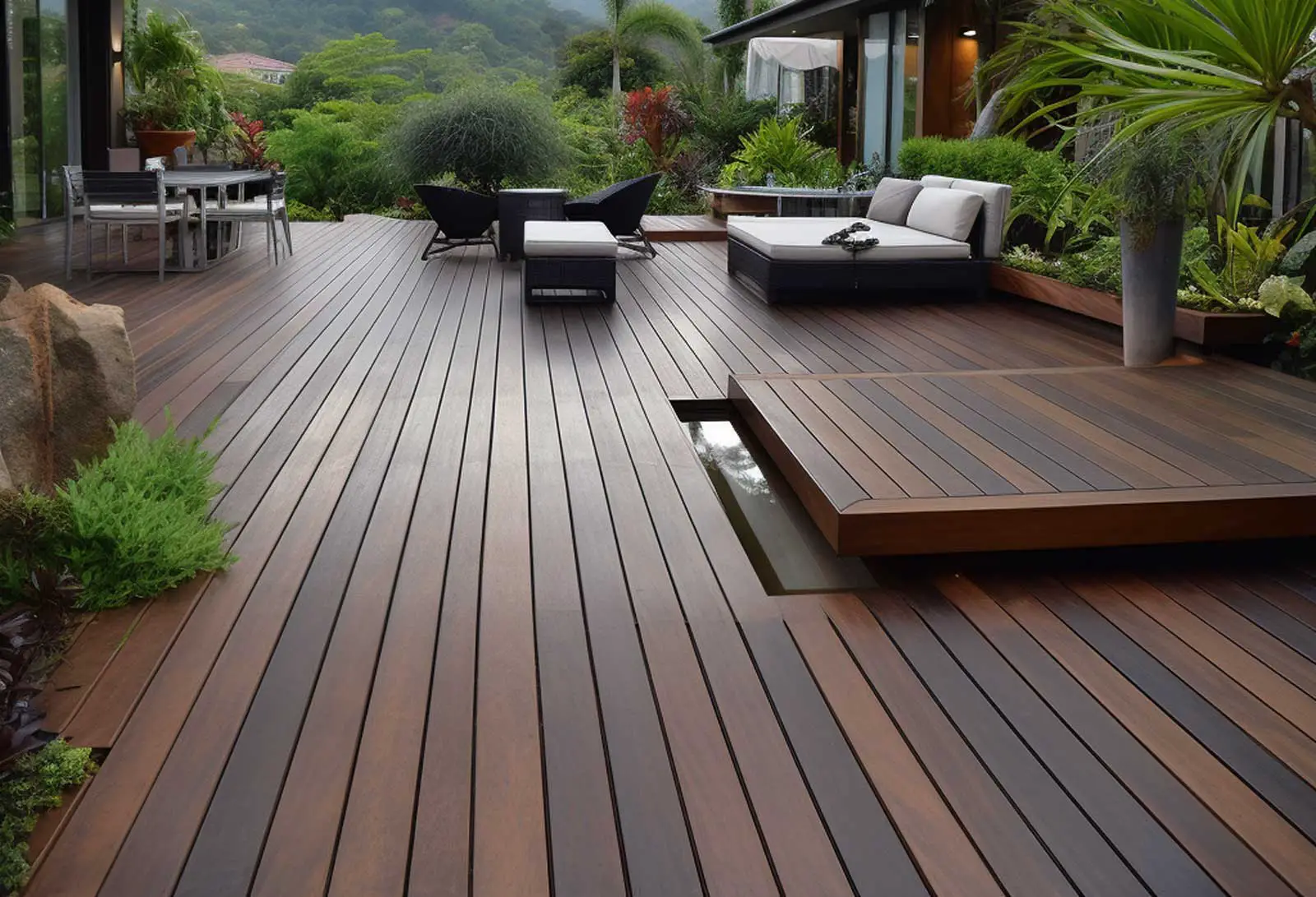
Making it Rainproof—Key Factors for Lumber in a Wet World
You’re pumped about your next outdoor project. You’ve got your designs, your plans, maybe even your crew. But what’s going to happen when the skies darken and the rain starts pouring? To ensure you’re making an excellent choice in lumber that’ll last a long time, you gotta keep an eye on a few essential things.
Pour Decisions: The Lowdown on Water Resistance
There’s one thing you can’t afford to ignore—water resistance. It’s what separates the titans of timber from the wimpy woods. Ignore it, and you might as well be building a water park in your backyard.
Table: Popular Choices for Water-Resistant Woods
| Types of Wood | Water Resistance Rating |
|---|---|
| Teak Wood | Excellent |
| Western Red Cedar | Great |
| Ipe Wood | Exceptional |
Hey, do you remember how water beads up on a newly waxed car? Some woods have a similar effect due to their natural oils. It makes them less porous and less susceptible to absorbing water.
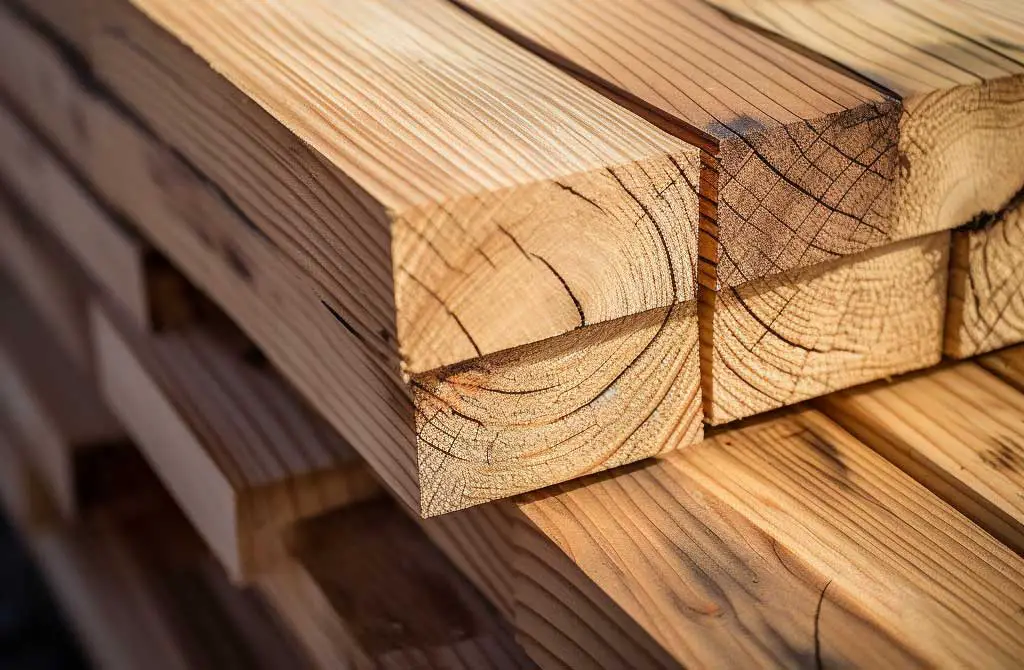
Built to Last: Is the Wood Durable?
Here comes your next big decision point—durability. Will your wood be the Hercules of outdoor applications or the Achilles with a tender heel?
- Dense Wood: Hardwoods like Ipe wood are not just water-resistant but also less prone to scratches and dents.
- Chemical Treatments: Some woods like Pine can be treated to enhance their lifespan.
- Natural Resistance: Woods like Black Locust are naturally resistant to insect infestation and decay.
And speaking of durability, I once decided to save some bucks by choosing a less-than-stellar option for my deck. Let’s just say the planks couldn’t handle my energetic Golden Retriever. Learn from my missteps.
Price Tag Blues: How Cost Matters
Don’t get too carried away in your quest for the perfect lumber that you forget about the price. There are different types of wood that balance great durability and water resistance without breaking the bank. Western Red Cedar and White Oak are solid options, and they won’t require you to pawn Grandma’s heirlooms.
Don’t be penny wise and pound foolish. A popular choice with a higher initial cost might save you big on maintenance in the long run.
Alright, you’re armed and ready to choose your ideal wood. In the next section, let’s dig into the practical steps of how you can protect whatever wood you decide on, come rain or shine. Ready?
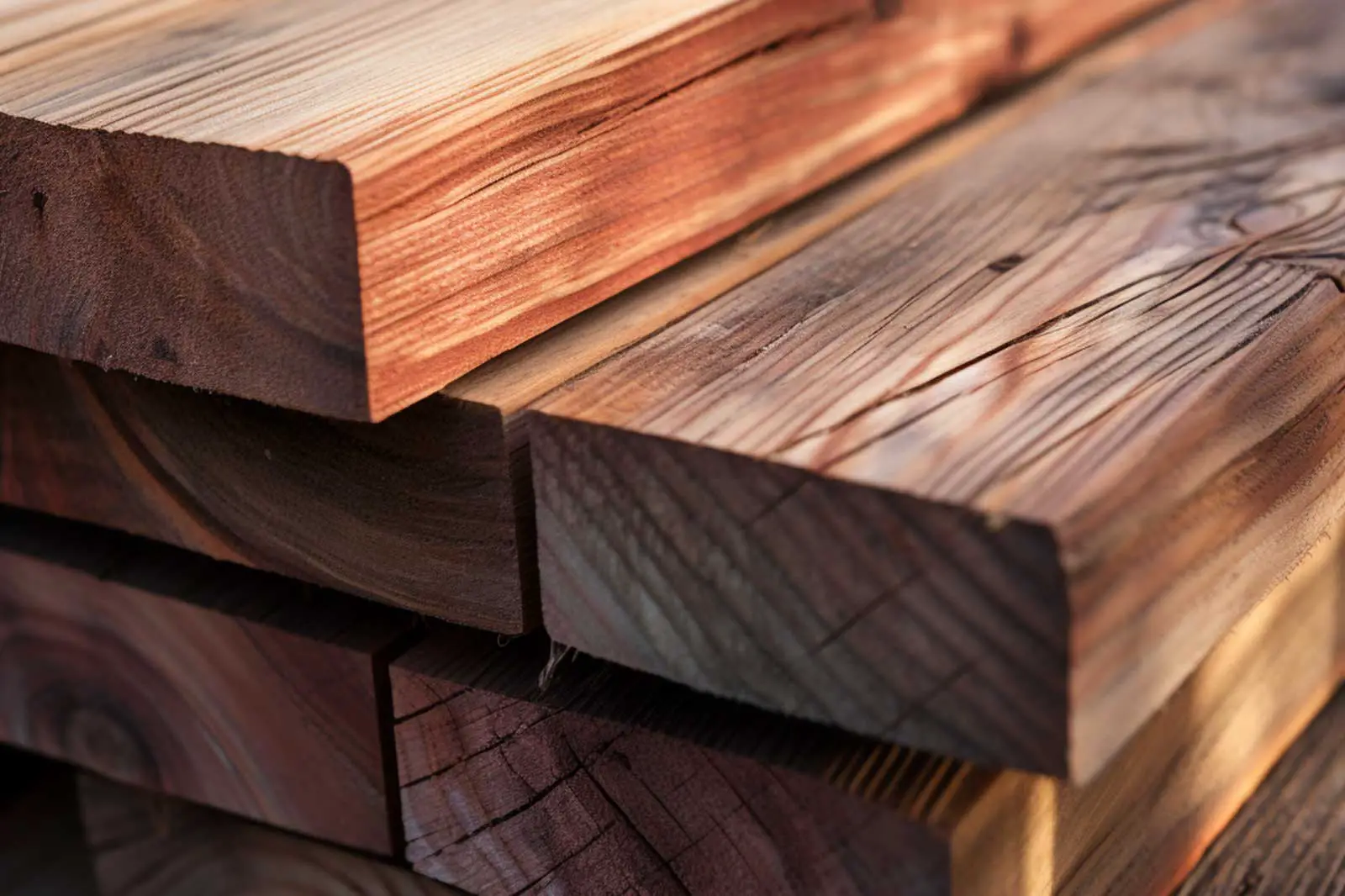
The Top Timber Types for Wet Weather
Look, you want your outdoor project to withstand more than a sneeze, right? But when the weather turns from “sunny smiles” to “torrential tears,” it’s your wood choice that’ll either stand tall or slump over. Let’s dive deep into the wood species that’ll give you more than just a fighting chance against the elements.
Western Red Cedar: The North American Necessity
Originally from North America, Western Red Cedar is a local hero when it comes to weathering storms. In fact, using this for your outdoor furniture is more than just a good idea; it’s borderline genius.
Western Red Cedar Characteristics
| Traits | Ratings |
|---|---|
| Water Resistance | High |
| Durability | Moderate |
| Cost | Moderate-High |
Now, don’t underestimate this type of cedar wood. Its natural oils provide high water resistance, while its durability makes it a classic choice for outdoor projects.
White Oak: The American Heavyweight
Another North American favorite, White Oak is your go-to when you’re looking for wood with good resistance to water. Heck, this type of wood has high resistance—it practically sneers at water.
White Oak Characteristics
| Traits | Ratings |
|---|---|
| Water Resistance | Very High |
| Durability | High |
| Cost | High |
Ideal for both furniture and structural applications, White Oak’s hardy nature makes it a strong contender against wet conditions.
Black Locust (Robinia pseudoacacia): The U.S. Underdog
Native to the United States, Black Locust or Robinia pseudoacacia brings longevity—think long life—to the table. In fact, it treats insect damage like a minor inconvenience.
Table: Black Locust Characteristics
| Traits | Ratings |
|---|---|
| Water Resistance | High |
| Durability | Very High |
| Cost | Moderate |
Insect damage? Black Locust laughs in its face. You’re not just buying wood; you’re investing in an outdoor legacy.
Teak: The Tropical Titan
Straight outta Southeast Asia, Teak wood rolls in like a boss. Known for its natural oils and great durability, it’s the VIP choice for patio furniture.
Table: Teak Wood Characteristics
| Traits | Ratings |
|---|---|
| Water Resistance | Exceptional |
| Durability | Exceptional |
| Cost | High |
Want a wood type that could survive a monsoon and still look fabulous? Teak’s your guy.
Ipe (Brazilian Walnut): The South American Sensation
Hailing from South America, Ipe wood, also known as Brazilian Walnut, loves high humidity. Seriously, this is a great option for those living in wetter climes.
Table: Ipe Wood Characteristics
| Traits | Ratings |
|---|---|
| Water Resistance | Exceptional |
| Durability | Exceptional |
| Cost | High |
Ever watch a movie where the hero seems immune to everything? Ipe wood is like the Jason Bourne of lumbers. Invincible and cool under pressure.
Cypress: The All-American All-Star
When it comes to versatile American woods, Cypress trees take a victory lap. Renowned for its capability to withstand wet conditions, Cypress is the hometown favorite you’ve been overlooking.
Cypress Characteristics
| Traits | Ratings |
|---|---|
| Water Resistance | High |
| Durability | High |
| Cost | Moderate |
If you’re thinking Cypress is a wood of all trades, you’re onto something. It’s got it all: good looks, durability, and the water resistance to weather almost any storm.
Redwood: The California King
Step aside, everyone; the Californian is here. Redwood not only dominates the coastlines but also masters the art of longevity and water resistance.
Redwood Characteristics
| Traits | Ratings |
|---|---|
| Water Resistance | High |
| Durability | Very High |
| Cost | High |
This wood isn’t just a pretty face; it brings the brawn too. It’s a Californian, after all; it’s used to dealing with the elements.
Treated Pine: The Budget-Friendly Buddy
If you’re on a budget but not looking to compromise too much, Treated Pine says, “Hey there, friend!” With chemical treatments to boost its resilience, this wood is an affordable ally against moisture.
Table: Treated Pine Characteristics
| Traits | Ratings |
|---|---|
| Water Resistance | Moderate |
| Durability | Moderate |
| Cost | Low |
Personal anecdote time: I once used treated pine for a DIY patio furniture project. I was skeptical at first, but it’s held up surprisingly well through three rainy seasons. Treated Pine may not be the rock star of the wood world, but it knows how to tour.
Mahogany: The Exotic Choice
Last but not least, Mahogany makes an entrance. Originating from Central America, this is the wood you pick when you want your outdoor space to whisper elegance while shouting durability.
Mahogany Characteristics
| Traits | Ratings |
|---|---|
| Water Resistance | High |
| Durability | Very High |
| Cost | High |
With Mahogany, you’re not just buying wood; you’re buying a status symbol that also holds up well against wet weather.
Douglas Fir: The Jack-of-All-Trades
Rounding out our list, we’ve got Douglas Fir, a North American native that’s versatile enough for almost any outdoor project you can imagine. This is the lumber you pick when you’re looking for reliable performance without breaking the bank.
Table: Douglas Fir Characteristics
| Traits | Ratings |
|---|---|
| Water Resistance | Moderate |
| Durability | High |
| Cost | Moderate |
With Douglas Fir, you’re getting a well-balanced wood that offers durability at a middle-of-the-road price point. Whether you’re building a deck or framing a shed, Douglas Fir stands as a sturdy and economical choice.
| Type of Wood | Origin | Water Resistance | Durability | Cost | Best For |
|---|---|---|---|---|---|
| Western Red Cedar | North America | High | High | High | Outdoor Furniture |
| White Oak | North America | High | Very High | High | Outdoor Use |
| Black Locust (Robinia pseudoacacia) | United States | High | Very High | Moderate | Long Life, Resistant to Insect Damage |
| Teak (Tectona grandis) | Southeast Asia | Exceptional | Exceptional | Very High | Patio Furniture |
| Ipe (Brazilian Walnut) | South America | Exceptional | Exceptional | Very High | Outdoor Applications, High Humidity Environments |
| Bald Cypress | United States | High | High | Moderate | Versatile Outdoor Projects |
| Redwood | California | High | Very High | High | High-End Outdoor Projects |
| Honduran Mahogany | Central America | High | Very High | High | Elegant Outdoor Furniture |
| Treated Pine | Various | Moderate | Moderate | Low | Budget-Friendly Outdoor Projects |
| Douglas Fir | North America | Moderate | High | Moderate | Structural Outdoor Projects |
So, now that we’ve wrapped up our who’s who of awesome lumber choices, it’s time to take things to the next level. Are you ready to master the art of treating and maintaining these wood types?
Waterproofing Wizardry: Making Good Wood Great
So, you’ve chosen your perfect lumber for that deck, pergola, or maybe even that homemade canoe. But now you’re scratching your head, thinking about how to give it that extra layer of protection against rainy weather. Well, we’re diving into the game-changing options to make your lumber water-resistant, if not virtually waterproof.
The Chemistry Class You Wish You Had: Chemical Treatments
Remember when you snoozed through high school chemistry? Well, it’s coming back with a vengeance, but this time it’s actually useful. Chemical treatments can massively enhance the water resistance of your lumber. These treatments involve coating or impregnating the wood surface with water-resistant chemicals. It’s not rocket science, just good ol’ chemistry making your outdoor projects last a long time.
Pros:
- High level of water resistance
- Long-lasting effects
- Effective against wood rot and insect damage
Cons:
- May alter the natural beauty of the wood
- Chemicals could be harmful if not handled correctly
Liquid Gold: Tung Oil
Ever heard of Tung Oil? No, it’s not a new Marvel superhero. Originating from the seeds of the tung tree, this oil has been used for centuries to protect wood. Tung oil penetrates deep into the wood fibers, enhancing its durability and giving it a lush, matte finish. In terms of water resistance, it’s a solid choice.
Pros:
- Natural look and feel
- Enhances the wood’s natural colors
- Easy to apply
Cons:
- Multiple coats needed
- Takes time to dry
Linseed Oil: Not Just for Artists
Most people think of linseed oil as something you’d find in an artist’s studio, but this oil is a godsend for treating wood. Linseed oil penetrates the wood surface, making it more water-resistant and enhancing its natural colors. Now, it’s not as effective as chemical treatments, but it’s a great option for those who want a more natural approach.
Pros:
- Natural and eco-friendly
- Improves wood flexibility
- Easy to apply and reapply
Cons:
- Not as durable as chemical treatments
- Longer drying time
Here’s a personal anecdote for you: I used linseed oil on my own outdoor furniture, and let me tell you, the transformation was incredible. Not only did it boost the wood’s resistance to rain, but it also brought out an enriching color that made my backyard look like a spread in a home & garden magazine.
Now, all these treatments have their pros and cons. But the bottom line? Any of them will give your lumber a fighting chance against the elements.
Related & Frequently Asked Questions
You’ve got questions, we’ve got answers. You’re not the only one pondering the complexities of wood in wet climates. Let’s dive into the most-Googled questions that are directly related to making wood water-resistant and suited for rainy weather.
Q: What wood is best for rainy weather?
A: Western Red Cedar and Teak Wood are excellent choices for rainy weather due to their natural oils and high resistance to water damage. They are both durable and decay-resistant, making them ideal for outdoor projects in wet climates.
Q: What wood doesn’t rot in rain?
A: Black Locust and White Oak have excellent decay resistance and won’t rot easily in the rain. They are particularly useful for construction projects where long life and good resistance to the elements are a must.
Q: What is the best wood for high humidity?
A: Ipe Wood, also known as Brazilian Walnut, excels in high humidity conditions. This wood species from South America is dense and has a high oil content, giving it great durability against moisture content in the air.
Q: Is pine wood rain resistant?
A: Generally, no. Pine wood is a soft wood that tends to absorb water, making it susceptible to rot and water damage. However, chemical treatments can improve its water resistance for outdoor use.
Q: Which wood is waterproof in India?
A: Teak Wood is often considered the best waterproof wood in India. Native to Southeast Asia, it’s a popular choice for boat building and outdoor furniture due to its natural oils and water resistance.
Q: How do you permanently waterproof wood?
A: While no method can make wood “permanently” waterproof, chemical treatments provide the highest level of water resistance. For a more natural look, several coats of tung oil or linseed oil can also effectively waterproof the wood surface.
Q: What wood will last longest outdoors?
A: Ipe Wood and Black Locust are among the hardest woods that offer long life and high resistance to insect damage and decay. They are excellent choices for outdoor applications that require durability.
Q: What wood doesn’t absorb water?
A: White Oak and Cypress are known for their high resistance to water absorption. Their cellular structure is less porous, making them less prone to water damage.
Q: Is cedar wood good for rain?
A: Yes, Western Red Cedar is a good option for rainy conditions. Native to North America, its natural oils make it resistant to water damage and decay, ideal for outdoor furniture and other outdoor projects.
Q: Does plywood rot in rain?
A: Standard plywood is not highly water-resistant and can rot when exposed to prolonged wet conditions. However, marine-grade plywood is treated to resist water damage and is a better option for wet climates.
